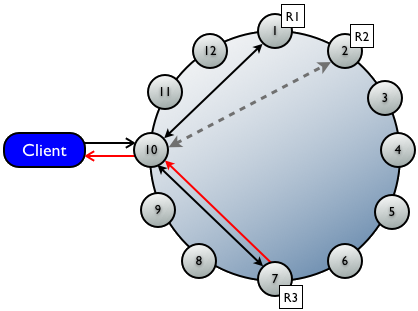Read requests
The two types of read requests that a coordinator node can send to a replica.
There are two types of read requests that a coordinator can send to a replica:
- A direct read request
- A background read repair request
The number of replicas contacted by a direct read request is determined by the consistency level specified by the client. Background read repair requests are sent to any additional replicas that did not receive a direct request. Read repair requests ensure that the requested row is made consistent on all replicas.
Thus, the coordinator first contacts the replicas specified by the consistency level. The coordinator sends these requests to the replicas that are currently responding the fastest. The nodes contacted respond with the requested data; if multiple nodes are contacted, the rows from each replica are compared in memory to see if they are consistent. If they are not, then the replica that has the most recent data (based on the timestamp) is used by the coordinator to forward the result back to the client.
To ensure that all replicas have the most recent version of frequently-read data, the coordinator also contacts and compares the data from all the remaining replicas that own the row in the background. If the replicas are inconsistent, the coordinator issues writes to the out-of-date replicas to update the row to the most recent values. This process is known as read repair. Read repair can be configured per table (using read_repair_chance), and is enabled by default.
For example, in a cluster with a replication factor of 3, and a read consistency level of QUORUM, 2 of the 3 replicas for the given row are contacted to fulfill the read request. Supposing the contacted replicas had different versions of the row, the replica with the most recent version would return the requested data. In the background, the third replica is checked for consistency with the first two, and if needed, the most recent replica issues a write to the out-of-date replicas.

